
Manual packaging processes are often the first choice for small businesses. They are cost-effective, easy to implement, and require minimal upfront investment. However, as production demands grow, manual processes can become a significant bottleneck. Issues like inconsistent quality, slower production rates, and rising labor costs can prevent businesses from scaling effectively. For businesses facing these challenges, transitioning from manual processes to automated packaging solutions is the next logical step. Whether through semi-automated packaging systems or full automation, upgrading your packaging operations can lead to dramatic improvements in productivity, quality, and scalability.
Here, we will outline each stage of the journey, so you can better understand the benefits of automation and determine where your business stands. From manual processes to semi-automated systems and fully automated solutions, we will explore how to optimize your packaging for growth.
Stage 1: Manual Packaging Processes
Manual packaging means that the packaging process is completed entirely by hand. This includes labeling, filling, and sealing products. While this approach is suitable for small businesses that are just starting out, it quickly reveals its limitations as demand increases.

The Realities of Manual Packaging
Manual packaging requires a significant amount of labor and time. Employees handle each step of the process, which can lead to:
- Inconsistent quality: Human error can result in misaligned labels, uneven fills, or poorly sealed containers.
- Limited productivity: Production rates are restricted by how quickly workers can complete tasks.
- Higher labor costs: Scaling production requires hiring additional staff, leading to increased operational costs.
- Worker fatigue: Repetitive tasks can lead to physical strain and errors, further affecting output and quality.
When Manual Packaging Makes Sense
While manual processes have limitations, there are specific situations where they may still be suitable:
- Small production batches: For businesses producing limited quantities of high-value or niche products, manual packaging may suffice.
- Highly customized packaging: Artisanal or handcrafted products requiring unique packaging designs benefit from the flexibility of manual processes.
- Short-term operations: Seasonal or temporary products with minimal production runs can be managed manually.
However, for most businesses, relying solely on manual operations is not sustainable in the long term. As production demands grow, transitioning to semi-automation becomes essential.
Stage 2: Transitioning to Semi-Automated Systems
Semi-automated packaging systems provide a bridge between manual operations and full automation. These systems automate repetitive tasks while still allowing for some manual control, making them an ideal starting point for businesses looking to improve efficiency.

Why Semi-Automation is a Smart Step Forward
Semi-automated packaging solutions offer several advantages over manual processes, including:
- Improved consistency: Equipment delivers uniform results, ensuring labels are properly aligned, containers are sealed, and fills are accurate.
- Reduced labor costs: Automating repetitive tasks minimizes the need for manual labor, freeing up employees to focus on more strategic tasks.
- Higher output rates: Semi-automated packaging systems can significantly increase production speed, helping businesses meet growing demand.
Semi-Automated Packaging Solutions for Packaging Success
Semi-automated packaging solutions are designed to bridge the gap between manual and fully automated processes. These systems target specific stages of the packaging workflow, improving efficiency and reducing human error while keeping costs manageable. Businesses can focus on automating the most repetitive or time-consuming tasks without overhauling their entire packaging line.
Labeling Equipment
Labeling is one of the most repetitive and error-prone tasks in packaging. Semi-automated labeling equipment streamlines this process by ensuring precision and consistency. For example, the Pack Leader USA PL-521 uses an angled roller conveyor to secure the product on its side as it moves through the label head, ensuring accurate label placement every time. This level of precision reduces waste caused by misaligned labels and enhances the product's overall appearance.
Capping Equipment
Semi-automatic capping equipment takes the guesswork out of securing caps on bottles or jars. Pack Leader USA’s CP-10 is fully adjustable at every stage, ensuring a secure and consistent seal for each product. This equipment improves product integrity, protects against leaks, and extends shelf life, making them indispensable for industries such as food and beverage, cosmetics, and healthcare.
Filling Equipment
Filling equipment automates dispensing liquids, powders, or granules into containers with consistent accuracy. This ensures uniform product volumes and eliminates the variability associated with manual filling. Semi-automated filling systems are ideal for small to mid-sized businesses producing items like sauces, lotions, or granular products, where consistency is key to maintaining quality and customer satisfaction.
4 Signs Your Business is Ready for Semi-Automation
How can you tell if it is time to move to semi-automation? If you are experiencing any of these situations, it may be time to make the leap.
- Increasing order volumes: Manual processes can no longer keep up with growing demand.
- Quality control issues: Errors in labeling, filling, or sealing affect product presentation and consumer trust.
- Rising labor costs: The expense of hiring additional staff outweighs the benefits of manual operations.
- Missed deadlines: Delayed orders due to slow production times signal the need for a more efficient system.
Stage 3: Embracing Full Automation
For businesses experiencing rapid growth or consistently high production demands, fully automated packaging solutions can be the way to go. These systems handle every aspect of packaging with minimal manual intervention, maximizing efficiency and consistency.

The Unmatched Benefits of Fully Automated Packaging Systems
Full automation offers unparalleled benefits, such as:
- Maximized productivity: Automated packaging solutions operate continuously, significantly increasing output rates.
- Enhanced consistency: Equipment can perform tasks with precision, ensuring every product meets quality standards.
- Reduced error rates: Automation eliminates the variability of human error, resulting in reliable and professional packaging.
- Scalability: Fully automated packaging systems can accommodate large-scale production, allowing businesses to grow without bottlenecks.
Explore the Versatility of Fully Automated Packaging Solutions
Fully automated packaging solutions streamline operations, reduce error rates, and maximize productivity. Here is a deeper dive into the types of fully automated solutions and how they can be applied.
Filling and Sealing Equipment
Filling and sealing equipment ensures that products are dispensed into containers with precision and securely sealed to maintain quality. These systems are ideal for industries such as:
- Food and Beverage: Automate the filling of sauces, beverages, or granular products into jars, bottles, or pouches, followed by tamper-proof sealing to ensure freshness.
- Pharmaceuticals: Precisely measure and fill capsules, liquids, or powders into blister packs or bottles to meet stringent regulatory requirements.
- Cosmetics: Handle products like lotions, creams, or serums with high accuracy, ensuring no spillage or contamination.
This equipment improves efficiency by eliminating inconsistencies in volume and sealing, which can occur with manual or semi-automated processes.
Labeling Systems
Automated labeling systems ensure that labels are applied quickly, accurately, and consistently. Advanced systems, like those offered by Pack Leader USA, handle high speeds without compromising quality. Key applications include:
- Product Branding: Seamlessly apply custom branding labels to products, maintaining a professional appearance across large production runs.
- Regulatory Compliance: Ensure labels meet requirements for ingredient lists, allergen warnings, and nutrition facts without errors.
- Multi-Product Lines: Handle various product shapes and sizes within the same system, reducing the need for multiple labelers.
Packaging Lines
Fully automated packaging lines integrate multiple processes, such as filling, capping, and labeling, into a single cohesive system. These comprehensive lines are ideal for:
- High-Volume Production: Manage large-scale production efficiently, meeting tight deadlines without sacrificing quality.
- Customizable Workflows: Adapt to specific product requirements, such as varying container shapes or sizes, ensuring maximum flexibility.
- End-to-End Automation: Streamline the entire packaging process, from raw materials to finished goods ready for distribution.
For example, a fully automated packaging line for a beverage company might include bottle filling, capping, and label application, all managed seamlessly through a central control system.
Key Factors to Evaluate Before Going Fully Automated
While full automation offers significant advantages, businesses should carefully consider if they are ready for this next step. Key factors to consider include:
- Cost: The upfront investment in automated packaging machines can be substantial, but the long-term savings often outweigh the initial expense.
- Space requirements: Automated packaging solutions require adequate space for installation and operation.
- Production goals: Ensure that full automation aligns with your long-term growth strategy and production needs.
Deciding the Right Path for Your Business
Fully automated packaging solutions bring unmatched benefits to businesses, particularly those experiencing rapid growth or high production demands. By operating continuously, these systems maximize productivity, enabling businesses to significantly increase output rates without compromising quality. One of the key advantages is enhanced consistency. Automated packaging machines can perform tasks with precision, ensuring that every product meets stringent quality standards. This level of reliability eliminates the variability and errors often associated with manual processes, resulting in a polished, professional final product.

Automated packaging systems are designed to accommodate large-scale production, making it easier for businesses to grow without encountering bottlenecks. As demand increases, these systems seamlessly adapt, ensuring that production keeps pace with market needs. By reducing human error and delivering consistent results, fully automated solutions improve operational efficiency and enhance customer satisfaction and trust in the product.
Transform Your Packaging Process for Growth
Transitioning from manual packaging to semi-automated and fully automated systems is a transformative process for businesses aiming to scale. Each stage offers unique benefits, from improving consistency and productivity to reducing labor costs and error rates.
By evaluating your current operations and production goals, you can identify the best solution for your needs. Whether it is taking the first step toward semi-automation or investing in full automation, upgrading your packaging process will enhance efficiency, quality, and scalability. Take the next step toward optimized packaging by downloading our “Practical Guide to Choosing the Right Labeling Equipment” and explore how the right solutions can support your growth.
.webp?width=200&height=135&name=2x-Packleader-logo-large%20(1).webp)

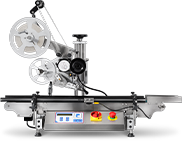
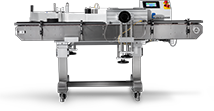
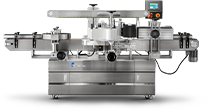
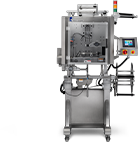
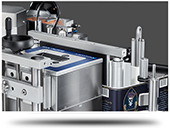
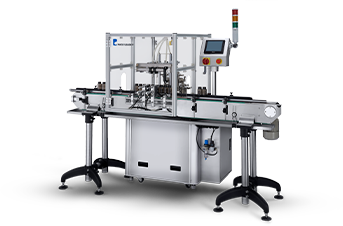
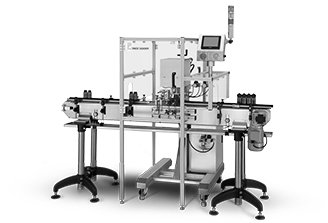
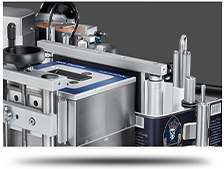





.webp?width=360&name=2x-color-logo%20(1).webp)